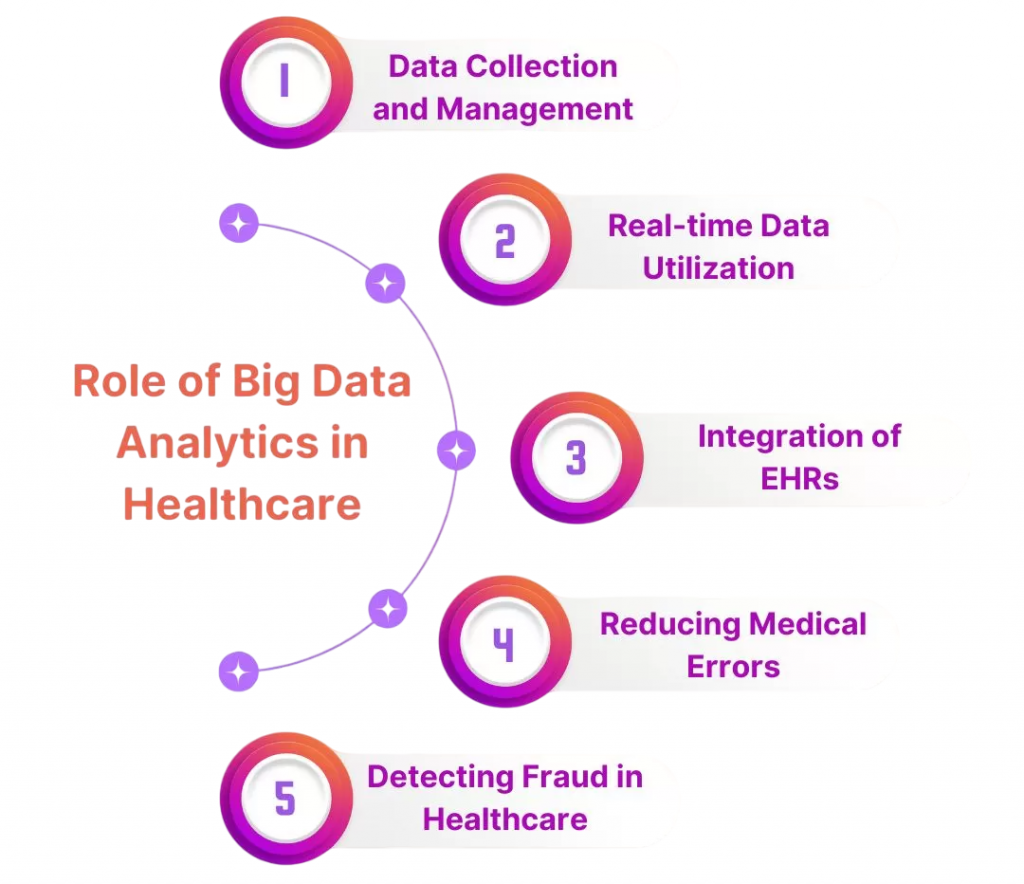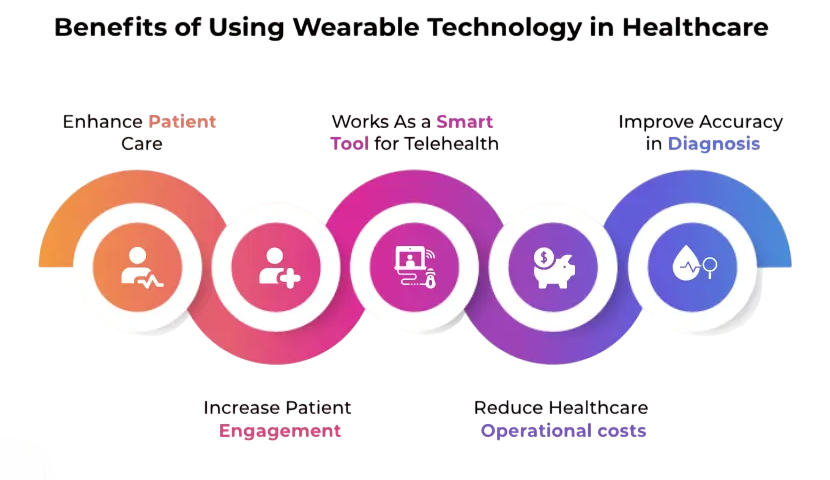
- Introduction
- Understanding Big Data in the Health and Fitness Ecosystem
- Fitness Trackers and Wearables: Real-Time Health Monitoring
- Personalized Diet and Nutrition Plans
- Predictive Health Analytics and Early Diagnosis
- Big Data and Preventive Healthcare
- Enhanced Fitness Coaching with Data Insights
- Mental Health Monitoring Through Smart Devices
- Public Health Management and Global Wellness Trends
- Conclusion
Introduction
The pursuit of fitness and good health has always been a common goal. In today’s digital era, Big Data in Healthcare is changing how people reach that goal through insights based on data. It has transformed how individuals, healthcare providers, fitness professionals, and public health agencies think about wellness. From your morning run to your sleep quality, every action is now measurable and can be improved thanks to Big Data. To turn this data into actionable insights, explore Data Science Training a hands-on program that empowers learners to analyze health metrics, build predictive models, and drive smarter wellness strategies. What was once based on instinct and general advice has turned into a personal, predictive, and preventive model. This shows how Big Data in Healthcare helps people live longer, healthier, and more informed lives.
Understanding Big Data in the Health and Fitness Ecosystem
Big Data in health and fitness refers to the collection, processing, and analysis of vast amounts of data generated from a variety of sources. These include wearable devices, health apps, hospital records, genetic information, lifestyle tracking, and environmental sensors.

This data, often collected in real time, is then used to identify patterns, build models, and offer insights into a person’s health status. To understand the scalable infrastructure that supports such diverse and high-volume data sources, visit What is Azure Data Lake a comprehensive article that explains how Azure enables secure storage, parallel processing, and advanced analytics across healthcare and other industries.
Interested in Obtaining Your Data Science Certificate? View The Data Science Online Training Offered By ACTE Right Now!
Fitness Trackers and Wearables: Real-Time Health Monitoring
Perhaps the most visible example of Big Data’s impact on personal health is the explosion of fitness trackers and wearable technology. Devices like Fitbit, Apple Watch, Garmin, and WHOOP continuously collect biometric data such as heart rate, sleep cycles, and activity levels. To understand how this data is stored and retrieved efficiently, visit HBase and Its Architecture a technical article that explains how HBase handles large-scale, real-time data with column-oriented storage and distributed processing.

- Heart rate
- Sleep cycles
- Calories burned
- Steps walked
- Blood oxygen levels
- Stress metrics
These data points are logged, stored, and analyzed over time, allowing users to track their health trends and make data-backed decisions about exercise, rest, hydration, and recovery. More importantly, wearables are now equipped with advanced sensors that can detect anomalies, such as irregular heart rhythms or abnormally low oxygen levels, prompting early medical intervention.
To Explore Data Science in Depth, Check Out Our Comprehensive Data Science Online Training To Gain Insights From Our Experts!
Personalized Diet and Nutrition Plans
- Big Data has redefined how we approach food and nutrition. Through the use of mobile health apps, connected kitchen gadgets, and even AI-based food recognition tools, users can now receive personalized meal recommendations tailored to their caloric needs, fitness goals, and medical conditions. Platforms like MyFitnessPal, HealthifyMe, and Noom use user data such as age, weight, dietary preferences, and activity level to create real-time dietary suggestions.
- With consistent logging, these tools identify eating patterns and micronutrient deficiencies making it easier to stick to a healthy diet and meet long-term wellness goals. Some apps go even further, integrating genomic data or gut microbiome profiles to suggest ultra-customized meal plans, a frontier only made possible by Big Data. Personalized Diet and Nutrition Plans
Predictive Health Analytics and Early Diagnosis
One of Big Data’s most promising applications is in predictive analytics using patterns in historical and real-time health data to foresee potential medical issues before symptoms even arise. By aggregating data from patient histories, wearable devices, and lab results, healthcare platforms can identify warning signs of chronic diseases like diabetes, cardiovascular issues, or respiratory illnesses. To gain the skills needed to build and interpret these life-saving models, explore Data Science Training a hands-on program that empowers professionals to apply predictive analytics, machine learning, and data engineering in healthcare innovation. For instance, a consistent rise in resting heart rate, coupled with poor sleep and elevated stress, could indicate the early stages of heart trouble. This form of early diagnosis not only saves lives but also significantly reduces treatment costs, by enabling intervention before the condition worsens.
Gain Your Master’s Certification in Data Science Training by Enrolling in Our Data Science Master Program Training Course Now!
Big Data and Preventive Healthcare
Preventive healthcare is about staying ahead of illness, and Big Data plays a pivotal role in making that possible. Instead of waiting for a disease to manifest, health professionals are now leveraging predictive algorithms to recommend lifestyle changes based on data trends. Insurance companies and corporate wellness programs are also getting involved. They use aggregated health data to promote preventive measures like routine screenings, fitness challenges, and dietary changes. To understand how such large-scale data is processed and simplified for analysis, visit What is Apache Pig an informative article that explains how Pig’s scripting platform enables efficient transformation of raw data into actionable insights within the Hadoop ecosystem. This shift toward prevention enabled by analytics creates healthier populations and lowers the burden on healthcare systems.
Are You Preparing for Data Science Jobs? Check Out ACTE’s Data Science Interview Questions and Answers to Boost Your Preparation!
Enhanced Fitness Coaching with Data Insights
- Fitness coaches and personal trainers no longer rely solely on visual observation and client feedback. Instead, they use analytics dashboards, smart gym equipment, and client wearables to fine-tune workout regimens. These tools provide real-time feedback on form, rep timing, endurance, and recovery.
- Coaches can track VO2 max levels, heart rate variability (HRV), and lactate thresholds, which were once only accessible in elite athletic environments. With such precise metrics, trainers can design bespoke training programs, monitor recovery in real time, and adjust strategies based on how a client’s body responds maximizing both performance and safety.
Mental Health Monitoring Through Smart Devices
Fitness isn’t just about the body it’s also about the mind. Big Data is making strides in mental health care through the analysis of behavioral and biometric indicators. Apps like Headspace, Moodpath, and Calm now use data from users’ sleep, phone activity, and heart rate to assess stress and emotional well-being. Some wearable devices can detect signs of depression or anxiety by analyzing speech patterns, social withdrawal, or erratic sleep. To understand how such complex, multi-layered data is stored and queried efficiently, visit Elasticsearch Nested Mapping a technical article that explains how nested fields enable accurate indexing and retrieval of deeply structured behavioral data. Employers, too, are turning to analytics-based platforms to track workforce wellness and provide mental health support through digital interventions. In a time when mental health issues are on the rise, these early detection systems provide a lifeline for millions, ensuring that emotional fitness is treated with the same urgency as physical fitness.
Public Health Management and Global Wellness Trends
At a macro level, Big Data is empowering governments, NGOs, and international bodies to track and respond to health trends on a population scale. Through data collected from hospitals, wearable devices, and mobile phones, public health officials can monitor disease outbreaks, resource allocation, and long-term wellness patterns. To understand the unified analytics platform that enables such large-scale data collaboration, visit What is Azure Databricks a comprehensive article that explains how Databricks integrates with Azure to deliver scalable processing, machine learning, and real-time insights.
- Disease outbreaks
- Vaccination trends
- Physical activity statistics
- Nutritional deficiencies
- Pollution-related health risks
During the COVID-19 pandemic, Big Data played a crucial role in contact tracing, case prediction, and vaccine rollout planning. It helped health systems allocate resources, predict surges, and manage large-scale wellness campaigns effectively. By understanding what’s happening at a societal level, public health agencies can craft smarter policies, distribute resources more equitably, and enhance community well-being.
Conclusion
The time of guessing in fitness and healthcare is coming to an end. Precision, personalization, and predictive insights are taking their place. Big Data in healthcare is a key player in this shift. It helps individuals understand their bodies better, enables doctors to provide focused treatments, and allows society to tackle health problems more effectively. To develop the analytical skills behind these breakthroughs, explore Data Science Training a hands-on program that empowers professionals to apply machine learning, predictive modeling, and data-driven diagnostics in healthcare and beyond. As technology advances, combining artificial intelligence, genomic science, and wearable innovations, Big Data in healthcare will stay central to the global wellness movement. It’s now more about being informed, connected, and proactive about health issues, with data working quietly behind the scenes to keep you healthy and thriving.


